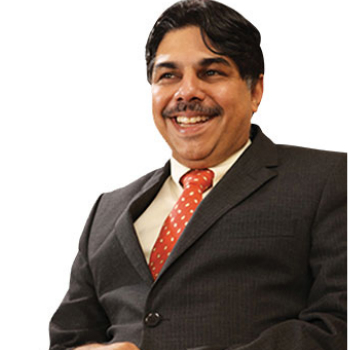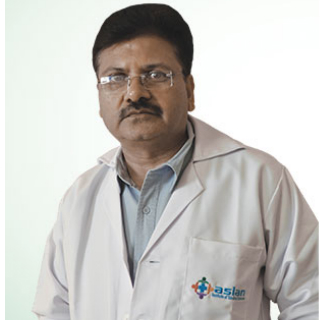
Dr Hrishikesh Pai, Consultant Gynaecologist, Fortis Bloom IVF Centre, New Delhi, is one of the pioneers in the field of infertility treatment with a variety of innovations to his credit. In an interaction with Shahid Akhter, ENN, he discusses the IVF issue in India.
At Fortis IVF Bloom, how do you address infertility?

Consultation with a fertility specialist is the primary step before going for the treatment. We at Fortis Bloom IVF Centre understand that infertility problems can be emotionally distressing for patients, and hence we respect their situation and help them overcome it. First step of consultation leads to the understanding of the problems and a brief guided outlook of the right treatment procedures available. We also explain the fertile period to the couples. Besides that, we prefer to conduct some investigations to track the couples reproductive health. The investigation procedures include routine blood tests, specific test to assess ovarian reserve, ultrasound for the wife and semen analysis for the husband.
The best way to deal with stress due to infertility is through counselling, which is suggested as a solution to the patients. We understand what patients are going through, and we put forward the best way to reduce emotional stress over the subject. Counsellors deal with patients to take out their fears and help them to relax beforehand.
Who is an ideal candidate for IVF or ART, and should this be the first choice in the line of treatment?
In case a couple is unable to conceive after one year of unprotected inter course, they should seek treatment for infertility. IVF is not the first resort. Couples are counselled for timed intercourse cycle, followed by IUI (Intra Uterine Insemination) depending on their test results. Occasionally, couples with wifes low ovarian reserve, bilateral tubal blockage, some developmental abnormalities or severe male factor infertility are taken directly for IVF.

What difficulties do you face in convincing the IVF couples?
Couples facing infertility are emotionally distressed. We need to clarify to them that the children born through ART are as normal as other babies. Over more than three million babies have been born after IVF treatment has been found to be safe worldwide, and the risk of any abnormality in such babies has not been found to be any more than other babies.
They also have apprehension regarding the child being their own. During the IVF procedure, the egg of the genetic mother and the sperm of the genetic father are used to create the embryos in the laboratory. These embryos are then transferred into the womb of the genetic mother or surrogate “ where in both cases the child is of the genetic parents. In case, the couple decides to go for a donor egg or sperm programme, the child still remains of one genetic parent.
Some couples may not find the IVF treatment affordable. As a part of our CSR initiatives at Fortis Bloom IVF Centre, we do have economy packages for the under-privileged patients.
Is IVF the only option available? How do you resolve the chances of multiple births?
IVF is a treatment option for couples with various types of infertility. It has been successfully used to overcome infertility due to blocked or damaged tubes, endometriosis, repeated IUI failure, unexplained infertility, poor ovarian reserve, poor or even nil sperm count (through sperm retri techniques like TESA/PESA)
IVF can be normally performed for counts which are more than 5 million per ml. For counts less than 5 million per ml, ICSI is a better option. At Fortis Bloom IVF Centre, the success rate of IVF is in the region of 40 to 50 percent for women less than 35 years, which are comparable to the leading units in the world.
For patients with repeated IVF/ICSI failures, we have even better techniques like Assisted Laser Hatching, IMSI (Intracytoplasmic Morphologically Selected Sperm Injection) and Embryoscope.
Assisted Laser Hatching – A cut is given to the zona using an 8 micron laser beam when the embryos are at 4 cell (Day 2), 6-8 cell (Day 3) stage or blastocyst stage and embryos are placed back in the womb. The cut (called Assisted Hatching) weakens the zona and helps in the hatching process which results in better pregnancy rates.
IMSI (Intracytoplasmic Morpho- logically Selected Sperm Injection) – Patients with low-sperm count can opt for IMSI technique in which sperms are magnified to 6,600 times which gives us the option to choose good sperms from the bad ones.
Embryoscope – Embryoscope technology contributes to improving success rate by monitoring the development of embryos and identifying the healthiest embryos to be implanted in the womb for achieving pregnancy.
This helps in preventing the chances of multiple pregnancy as only single best embryo is transferred per cycle.
What are the risks of ART?
Most of the procedures now-a-days are simple, of short duration and patient friendly. IVF/ICSI cycle needs a maximum hospital stay being restricted to four to six hours for egg pickup. Sometimes the ovaries swell up excessively, leading to fluid collection in abdomen and lungs. This is called ovarian hyperstimulation syndrome (OHSS), and may need hospitalization and sometimes removal of the fluid from the abdomen by a procedure called Paracentesis.
Occasionally the pregnancy may lodge in the fallopian tubes (ectopic pregnancy), and may need medical treatment or surgery for its removal. Complications may occur during the egg retri procedure as the removal of eggs through an aspirating needle entails a slight risk of bleeding, infection, and damage to the bowel, bladder, or a blood vessel.
Please tell us something about the embryology lab at Fortis.
Laboratory environment: HEPA filters, Japanese Nikon SMZ 2 B stereo zoom and Nikon Diaphot 300 inverted microscopes within laminar airflows, Hera cell CO2 incubators from Germany, Cook bench top incubators for embryo culture, disposables imported from Australia and UK, culture media Medicult and Vitrolife from Denmark and Sweden
State-of-the-art facilities:
Embryo freezing (Cryologic – Australia) & Micromanipulation ICSI (Narishige, Japan & Research Instruments, UK), Assisted Laser Hatching (Fertilase Laser), IMSI and Embryoscope
“As a part of our CSR initiatives at Fortis Bloom IVF Centre, we do have economy packages for the under-privileged patients”
What is success rate of IVF at Fortis Bloom IVF and your USP?
At Fortis Bloom IVF Centre, the success rate of IVF is in the region of 35 to 40 percent for women less than 35 years, which are comparable to the leading units in the world.
Our team of doctors has been practicing and specialising in infertility treatment for the past 20 years. We are one of the biggest chains of IVF centres in India
How do you see the growth of medical tourism by way of IVF?
Medical Tourism is growing rapidly including fertility treatments. The costeffective treatment options along with latest technology make India a desirable medical tourism destination.
How does the cost and services in IVF in India compete with other competitive nations?
The technology in fertility treatment in India is now at par with the West including the high success rates. The affordable costs enable couples all over the world to choose India for their choice of treatment.
Can you think of any government initiative that can make IVF more cost effective?
Government initiatives that can be of help are to provide subsidized treatment options where only cost of drugs and consumables are charged to patients.
Be a part of Elets Collaborative Initiatives. Join Us for Upcoming Events and explore business opportunities. Like us on Facebook , connect with us on LinkedIn and follow us on Twitter , Instagram.









